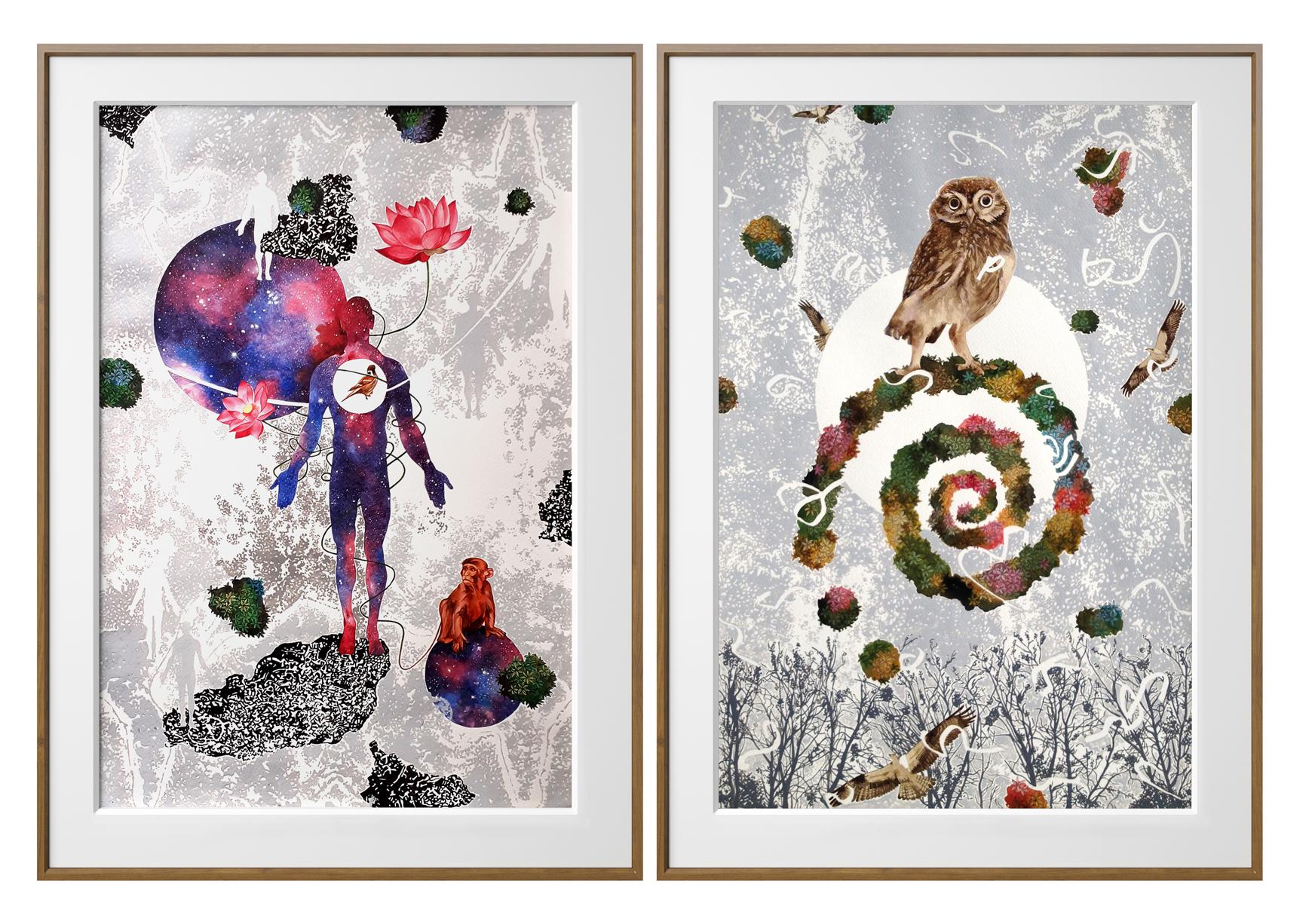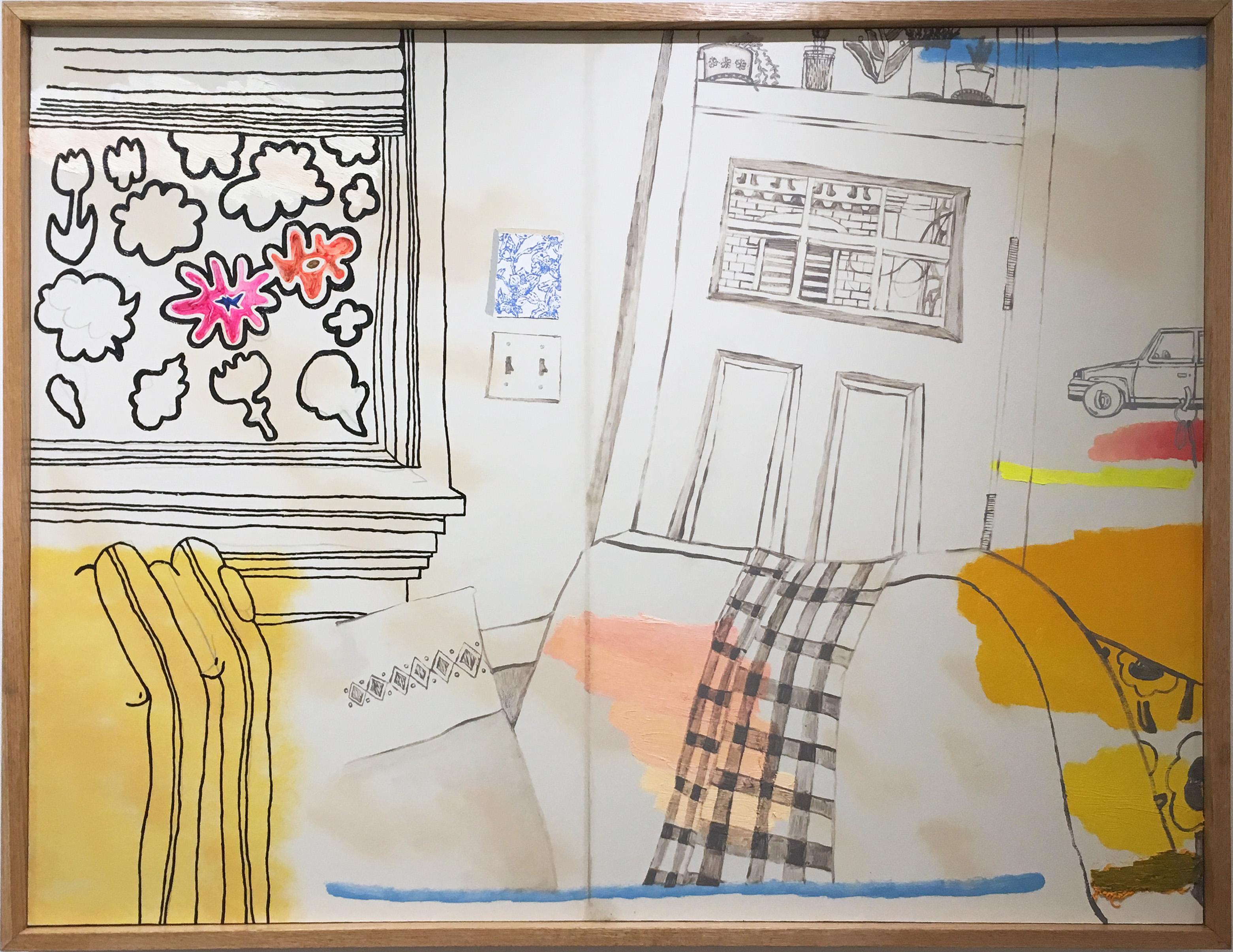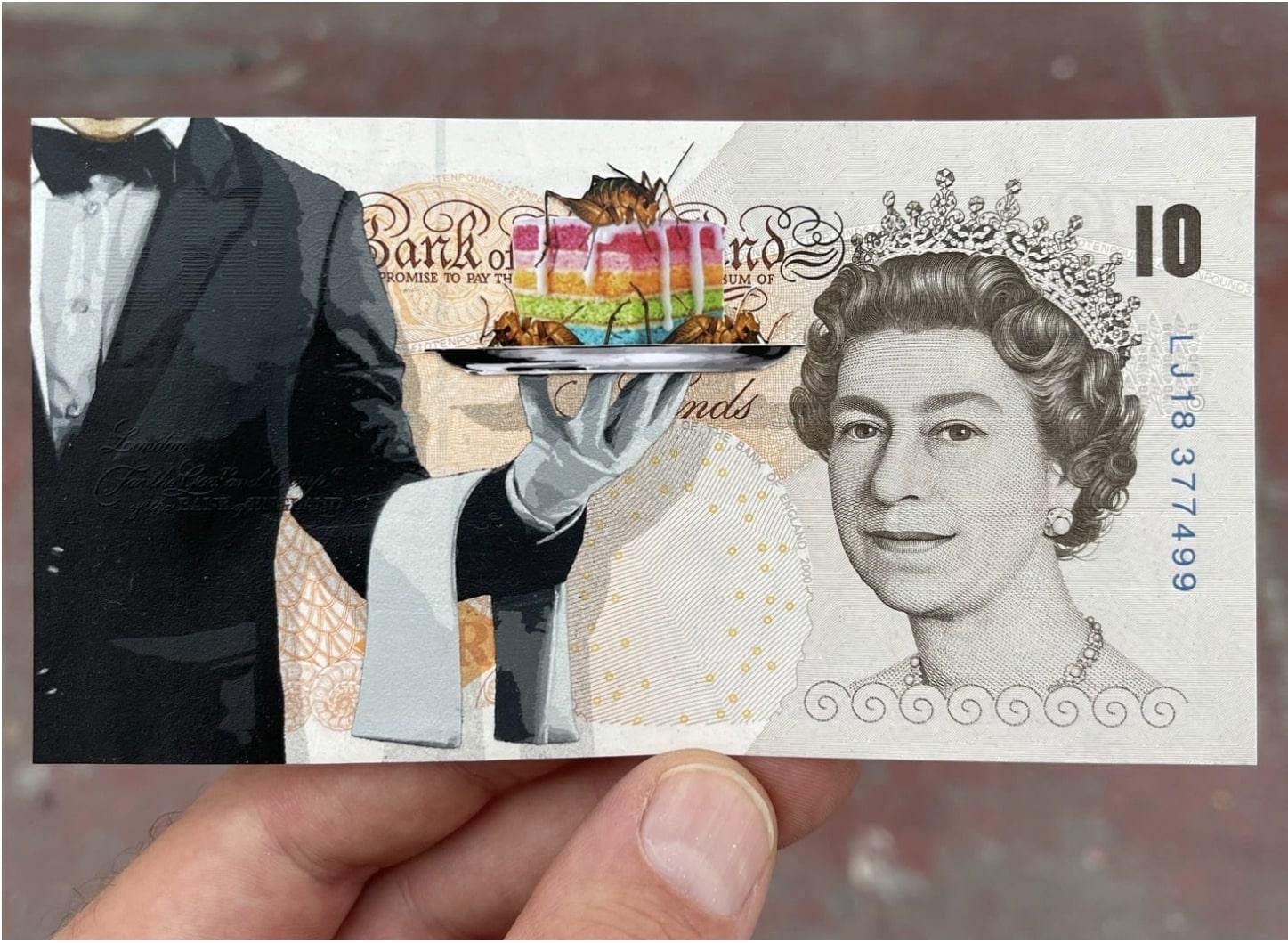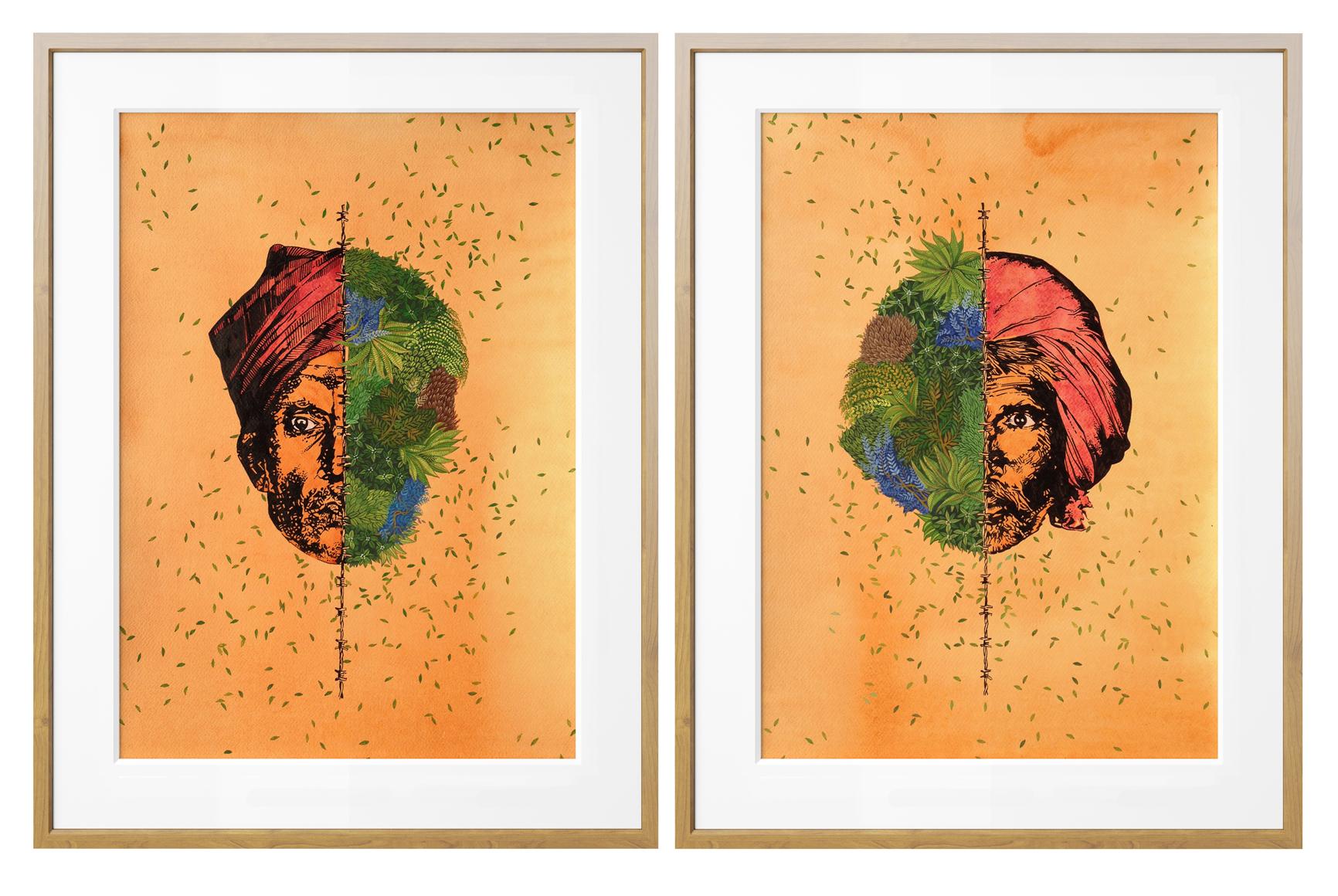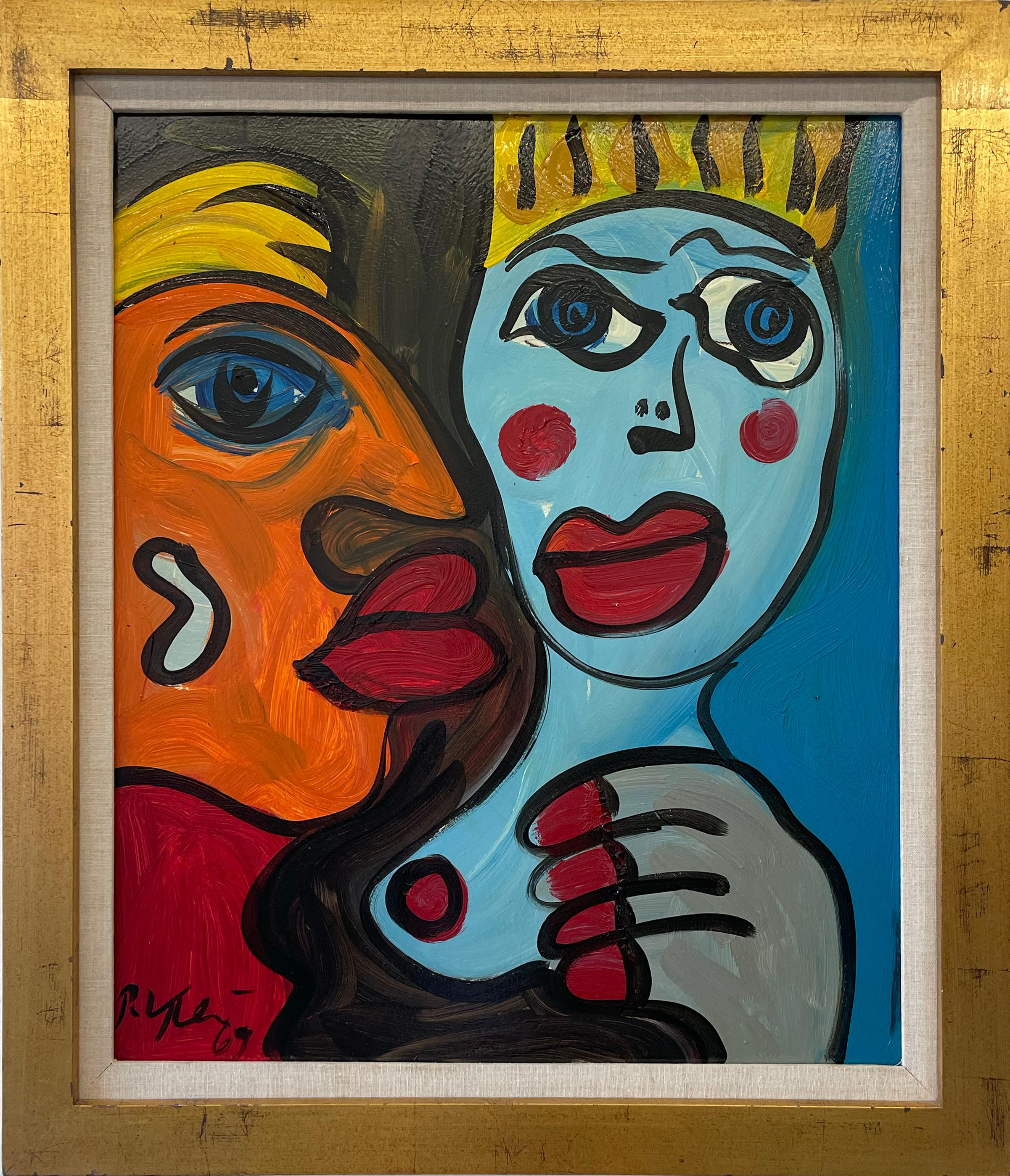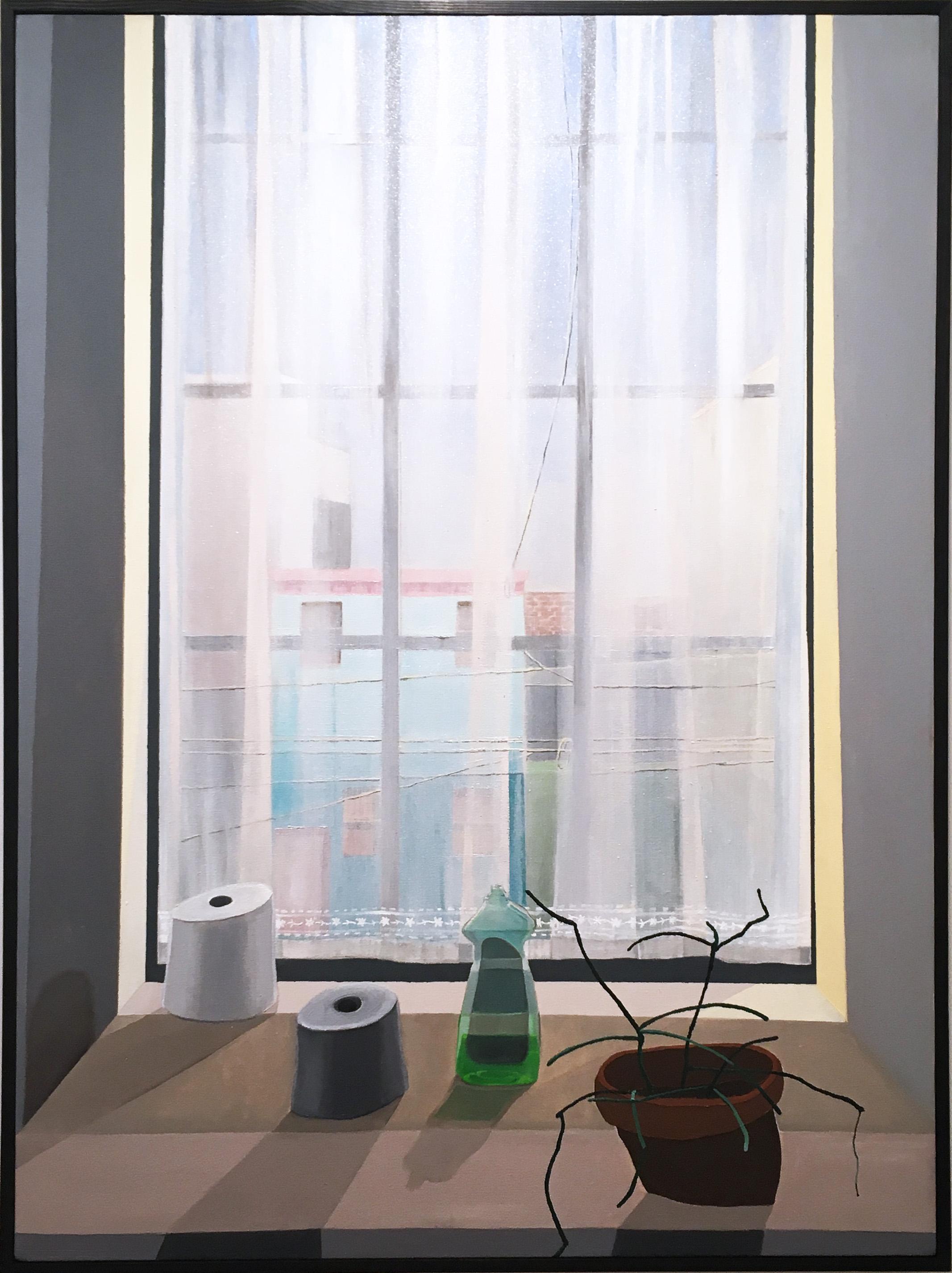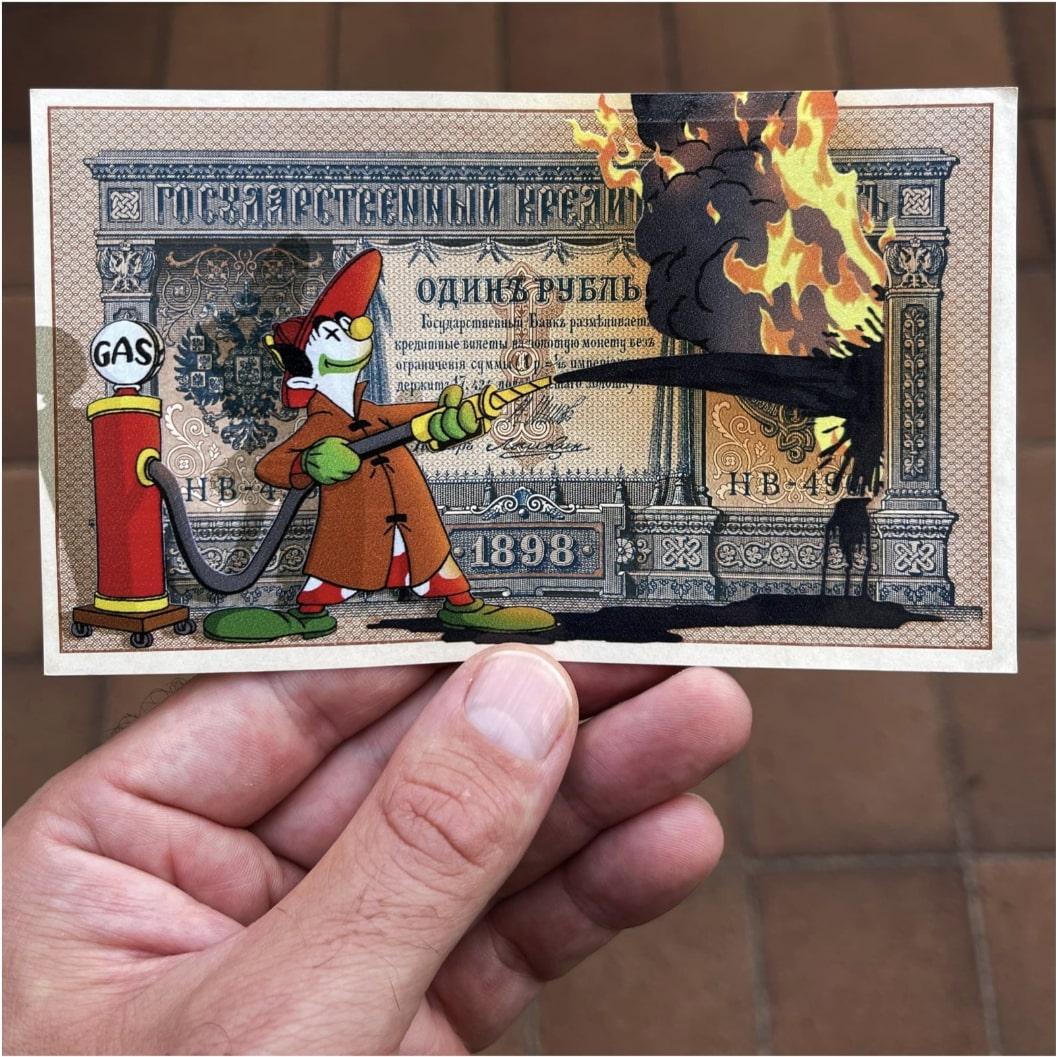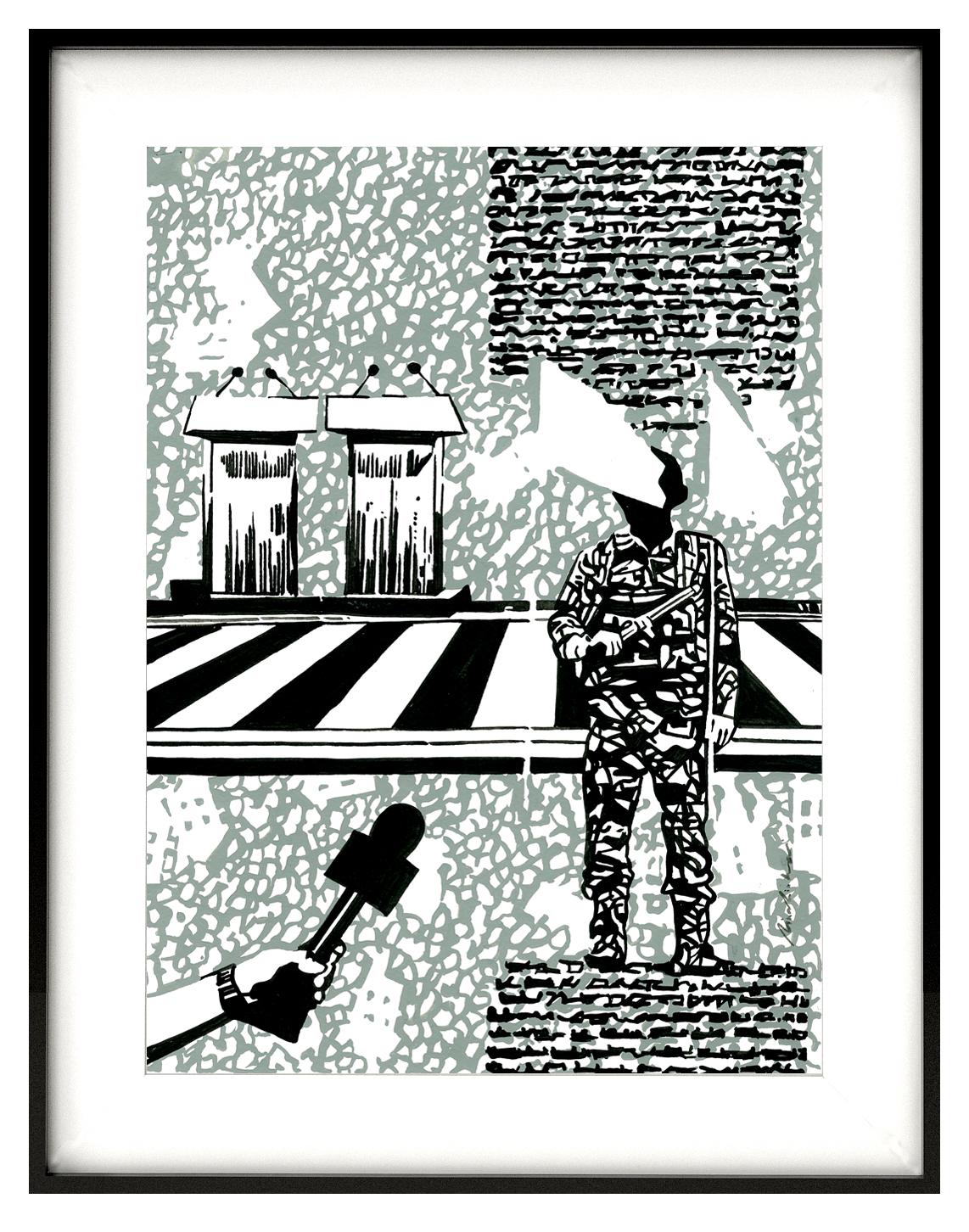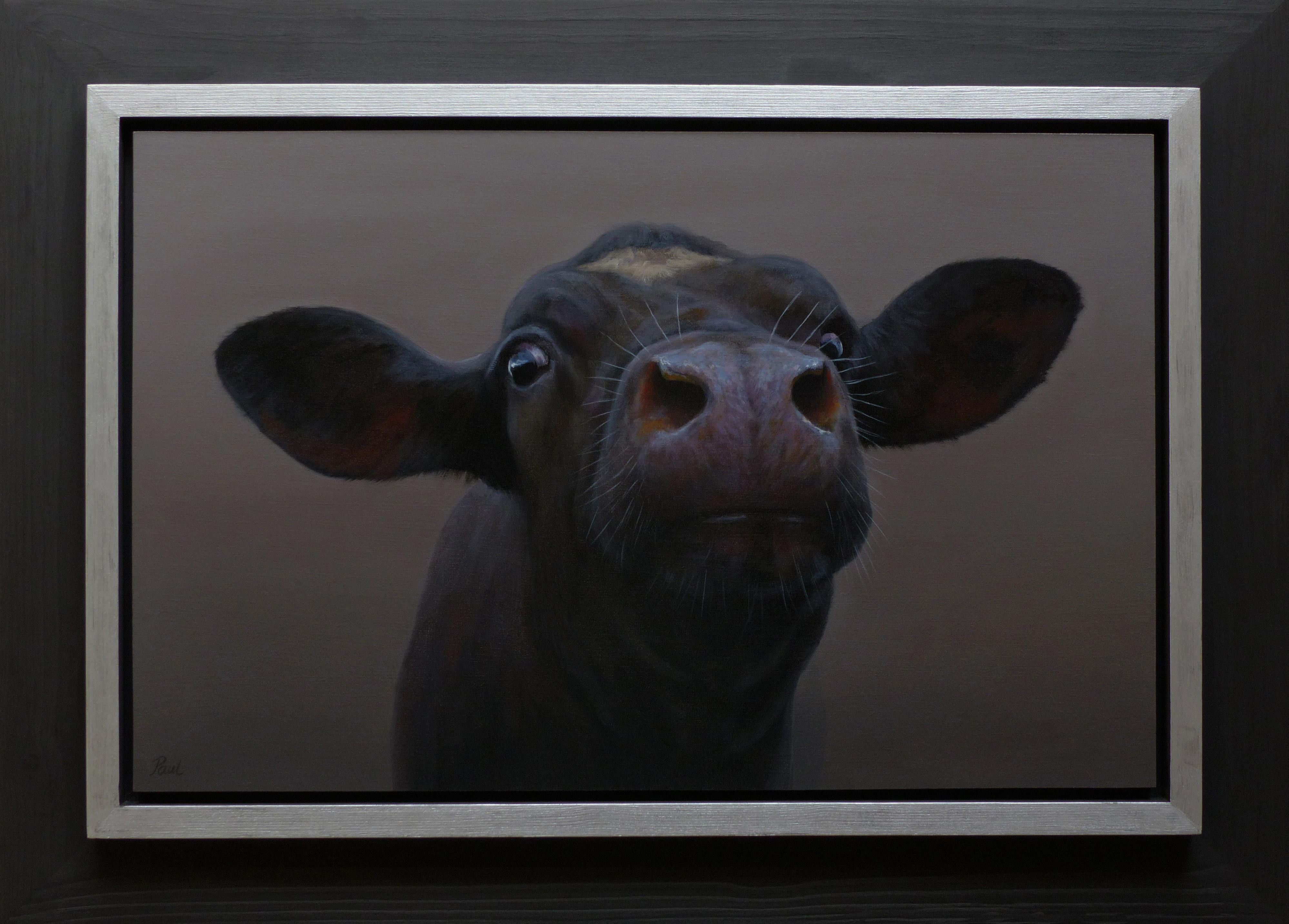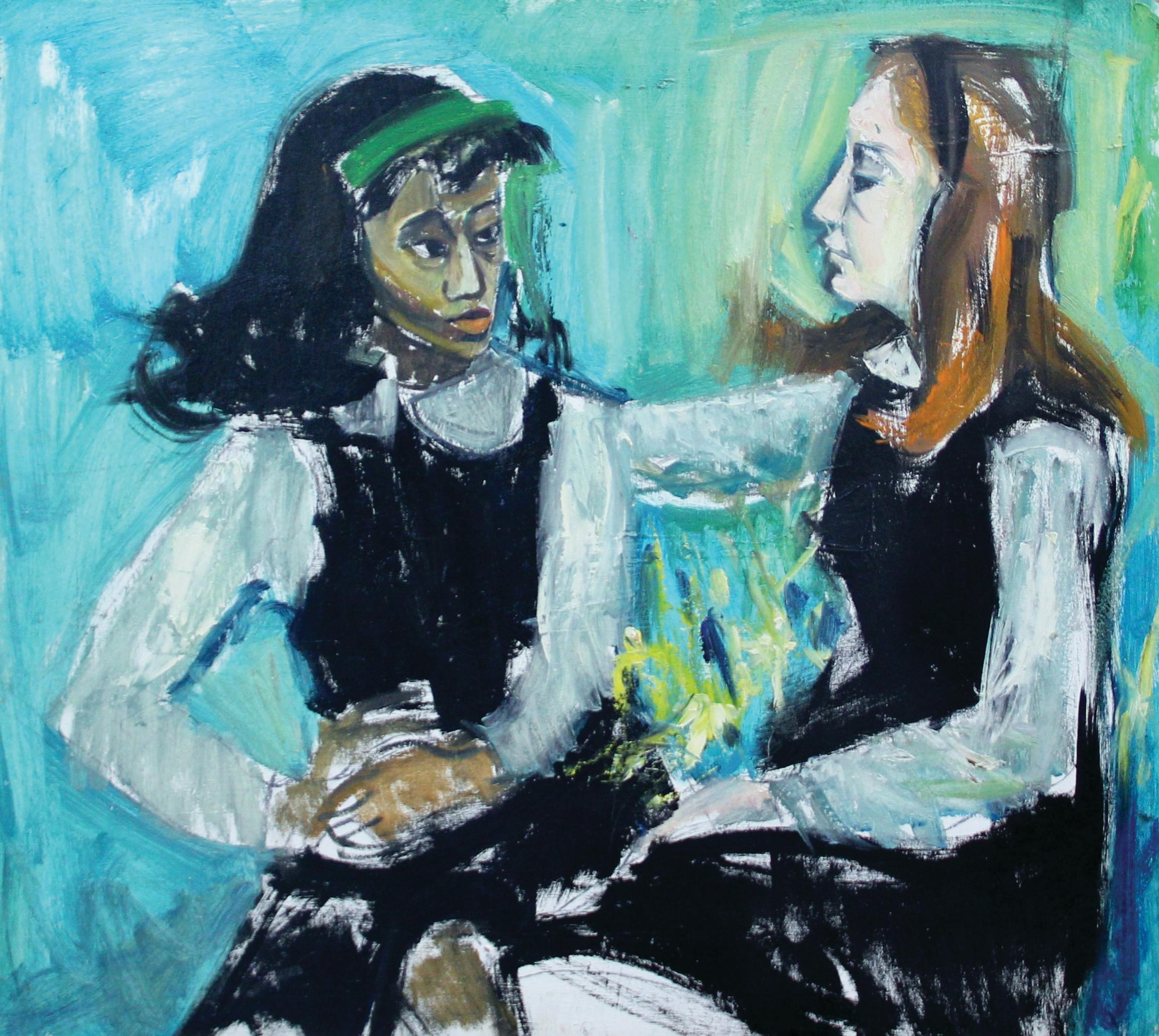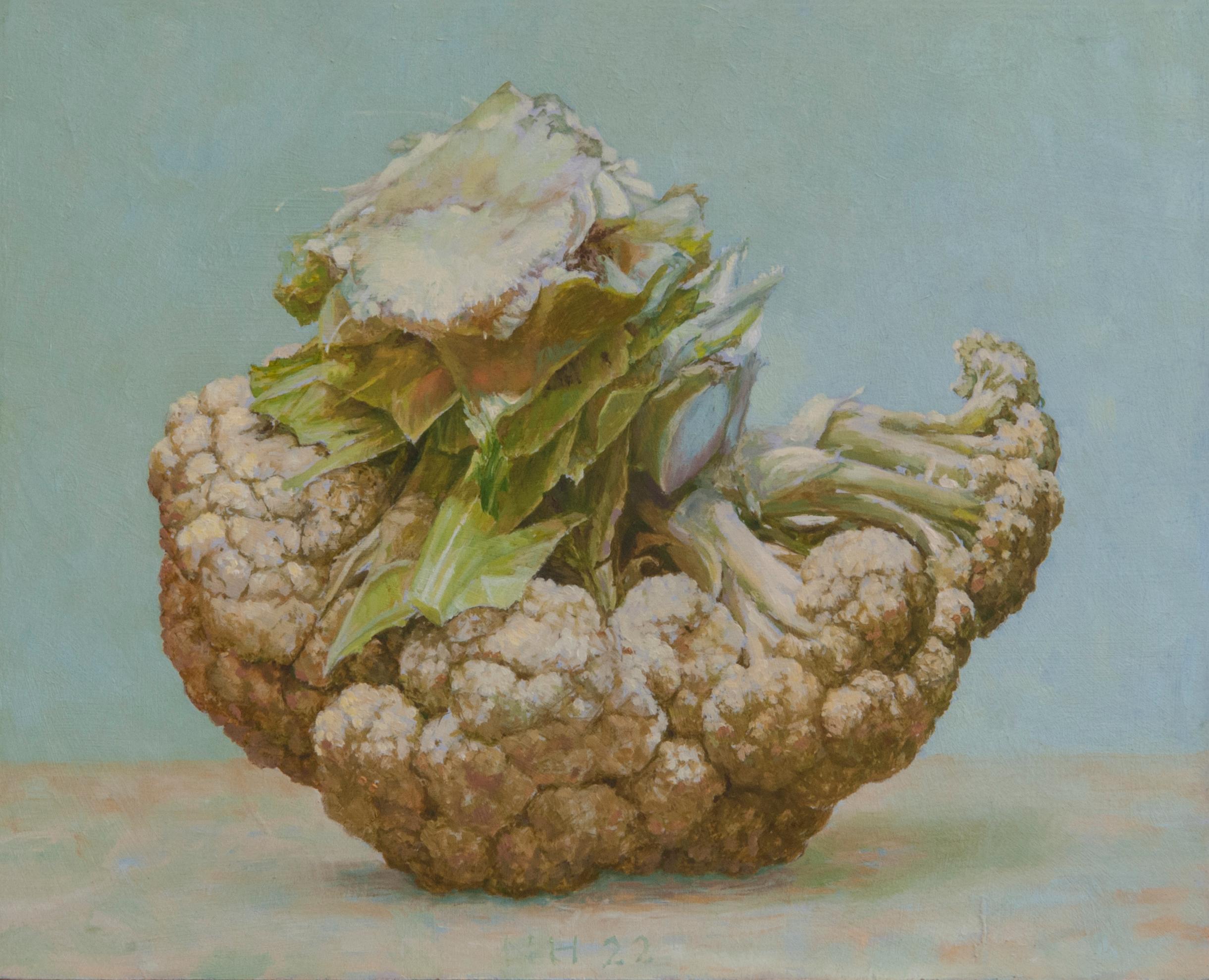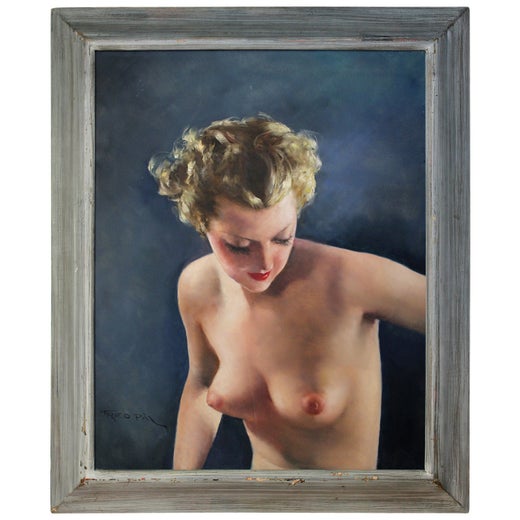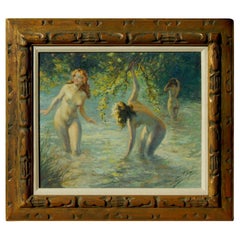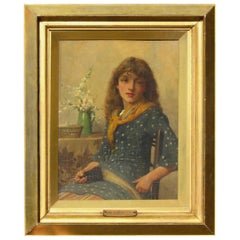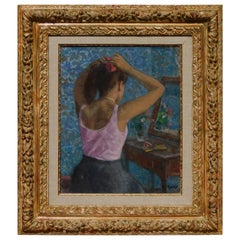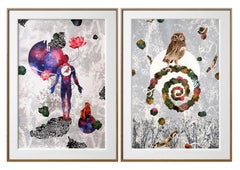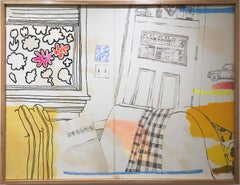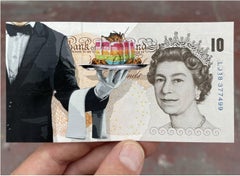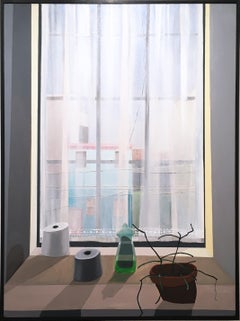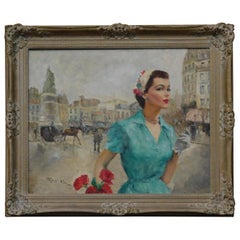
Pal Fried Oil on Canvas, Circa 1950's - Anabella in Paris
View Similar Items
Want more images or videos?
Request additional images or videos from the seller
1 of 8
Pal FriedPal Fried Oil on Canvas, Circa 1950's - Anabella in ParisCirca 1950's
Circa 1950's
Price:$3,750
$4,500List Price
About the Item
Pal Fried
Pál Fried (16 June 1893 in Hungary – 6 March 1976 in New York City) was a Hungarian artist best known for his eroticized paintings of female dancers and nudes. Pál Fried was born in Budapest in 1893. He received his art education at the Académie hongroise des arts (Hungarian Academy of Arts) where he was a pupil of Hugo Pohl who became one of his major influences. While under Pohl's direction, he executed many portraits of female nudes and Orientalist works. Later he studied in Paris at the Académie Julian, where he was the pupil of Claude Monet and Lucien Simone. In Paris, he was greatly influenced by the French Impressionists, especially Pierre-Auguste Renoir and Edgar Degas. This inspired him to prepare many paintings of ballerinas, dancers and circus performers.Fried emigrated to the United States in 1946 after World War II, where he taught at the New York Academy of Art. He prepared portraits of American celebrities such as Marilyn Monroe. Through his work in portraiture, he gained considerable financial success.He became a U.S. citizen in 1953. He lived in Los Angeles and New York City and died on 6 March, 1976 in New York, NY. He worked in oils and pastels and experimented with light and movement. His oil paintings were usually of dancers, nudes, and portraits, and while his subjects were primarily female, he also painted Paris, seascapes, cowboys and landscapes of the American West as well as Orientalist subject matter. He signed his paintings, as is usual in Hungarian, with his surname first as "Fried Pál". At times, this particular artist would make several, almost identical versions of the same oil painting, except he would use slightly different facial expressions and/or would try different colour schemes.
About the Seller
5.0
Gold Seller
Premium sellers maintaining a 4.3+ rating and 24-hour response times
1stDibs seller since 2024
37 sales on 1stDibs
Typical response time: 1 hour
Authenticity Guarantee
In the unlikely event there’s an issue with an item’s authenticity, contact us within 1 year for a full refund. DetailsMoney-Back Guarantee
If your item is not as described, is damaged in transit, or does not arrive, contact us within 7 days for a full refund. Details24-Hour Cancellation
You have a 24-hour grace period in which to reconsider your purchase, with no questions asked.Vetted Professional Sellers
Our world-class sellers must adhere to strict standards for service and quality, maintaining the integrity of our listings.Price-Match Guarantee
If you find that a seller listed the same item for a lower price elsewhere, we’ll match it.Trusted Global Delivery
Our best-in-class carrier network provides specialized shipping options worldwide, including custom delivery.More From This Seller
View AllR.H. Ives Gammell Painted Bas Relief on Wood, 1947 - Lady of the Seven Sorrows
By Robert Hale Ives Gammell
Located in Phoenix, AZ
Astounding painting and carving on wood panel by the “Hound of Heaven” artist Robert Gammell. Created 1947.
This beautiful work features rich color, gold accents and incredible detail.
Signed lower right “R.H. Ives Gammell” and dated ‘47.
The subject comes from the imagination of the artist and is titled “Lady of the Seven Sorrows.”
The work measures 34 1/2"h x 11 1/4"w and is considered to be one of the artist’s “Puppy Panels.” The ornate frame measures 38 1/2"h x 15 1/2"w x 1 1/4"d. The weight is 9 ½ pounds.
A label is attached to the verso listing the work as being an entry for the 1967 Grand National Show with the American Artists Professional League in New York.
This detailed and beautiful painting is a work to be treasured.
More Information Robert Hale Ives Gammell: After completing his major allegorical sequence, the Hound of Heaven, Gammell felt compelled to revisit certain themes and figurative compositions in later years. His original plan was to display the smaller panels, or "Puppy Panels" as he affectionately called them, between the larger Hound panels.
Robert Hale Ives Gammell (1893-1981) was a prolific professional painter working in Boston, Provincetown, and Williamstown, Massachusetts. During the sixty-five years of his career, Gammell painted murals, portraits, landscapes, and still lifes, but the pieces which excited him most were the allegorical works drawn from his imagination. In his diary Gammell wrote that he was “fascinated by the drama of man in his relationship to the forces of the universe and of his own nature.” Over the years he experimented using ancient myths and rituals as well as contemporary symbols in his attempts to articulate images of man’s terror, wonder and yearning in the face of a century of upheaval.
Excerpt from Elizabeth Ives Hunter, the God-daughter of R. H. Ives Gammell and the daughter of his assistant, Theodore W. J. Valsam.
R. H. Ives Gammell believed in the practice and standards of art should rest on the Gold standard established by the 19th-century French system of learning, as practiced by the Ecole des Beaux-Arts and Academie Julian of Paris. His personal mission was to follow that tradition, so he established his own Studio working with a handful of students at a time. His book ‘Twilight of Painting’ would help define a way back to those lofty goals for future artists, reflecting the uncompromising levels of quality that he embraced, and maintained.
Robert Hale Ives Gammell was born to wealth in Providence, Rhode Island and spent the majority of his artistic life in Boston at the Fenway Studios and in Williamstown, MA, where he died in 1981. In 1910, Gammell studied briefly with William C. Loring and Wm. Sergeant Kendall before training in 1913 at Boston's Museum School with Philip Hale, F.W. Benson and Edmund C. Tarbell for a few months.
Gammell then went to Provincetown, MA to study with Charles Hawthorn and then to the Academie Julian in Paris and the Academie Baschet until the end of 1914. He was tremendously influenced by the teachings of Tarbell and the work of Joseph DeCamp and William M. Paxton. He was so influenced by the Boston School he vowed to hand down their teaching traditions to generations of students and he did exactly that. Some of the painters who are "Gammellites" are Samuel Rose, Thomas R. Dunlay, Robert Cormier, Richard Lack, Gary Hoffman, Stephen Gjerston, Robert Douglas Hunter, David Lowrey, David Curtis...
Category
1940s Figurative Paintings
Materials
Oil, Wood Panel
French Artist Yves Diey Oil on Canvas, Les Baigneuses
By Yves Diey
Located in Phoenix, AZ
Original oil painting by French artist Yves Diey (1892-1984).
Signed lower right. In excellent condition.
Measures: 18" H x 21 3/4" W.
Frame size: 26 1/4" H x 29 3/4" W.
Category
Mid-20th Century Figurative Paintings
Materials
Paint
John Scott British Artist Oil on Board, Young Seamstress
By John Scott
Located in Phoenix, AZ
John Scott (1850-1918) British figure and genre painter. Oil on board in good condition, framed under glass.
Measures: 12 7/8" H x 9 5/8" W. Frame: 19" H x 15 1/2" W. Original frame,...
Category
Late 19th Century Figurative Paintings
Materials
Paint
Francois Gall Oil on Canvas Seated Figure, "Jeunne Fille de Coiffan"
By François Gall
Located in Phoenix, AZ
Oil on Canvas by post-impressionist French artist Francois Gall (1912-1987).
Signed lower right and titled on the verso “Jeunne Fille de Coiffan.”
Painting measures: 16” H x 13” W. ...
Category
Mid-20th Century Figurative Paintings
Materials
Paint
Philip Reisman Early Painting New York Subject - Delaney Street
By Philip Reisman
Located in Phoenix, AZ
Philip Reisman (1904-1992) Oil on Board, 1948.
This wonderful New York image is titled “Delancey Street” on the verso.
The work is signed by the artist “P. Reisman” lower right and...
Category
Mid-20th Century Figurative Paintings
Materials
Oil, Board
Mexican Modernist Painting by Jesus Leuus, 1973, La Familia
Located in Phoenix, AZ
Modern Mexican painting - acrylic on Masonite by Jesus Leuus (1948-)
This painting is in excellent condition and is signed and dated lower righ...
Category
20th Century Figurative Paintings
Materials
Paint
You May Also Like
Eternal Dance of Nature - Incredible Painting of Cosmic Nature by Indian Artist
By Binay Sinha
Located in Gilroy, CA
"Eternal Dance of Nature I" is a watercolor/acrylic painting on handmade paper by Indian artist Binay Sinha. Sinha delicately illustrates the relationship between man and nature in ...
Category
2010s Contemporary Figurative Paintings
Materials
Acrylic, Watercolor, Handmade Paper
$6,000 Sale Price
20% Off
Lounge, large oil painting, figurative, interior, peach, pinks, yellows, oranges
By Max Vesuvius Budnick
Located in Jersey City, NJ
Medium scale oil painting on panel of interior living room scene with bright yellow, peach, pink, orange, and blue with brown line work. A contemporary, figurative, cozy den setting...
Category
2010s Contemporary Figurative Paintings
Materials
Canvas, Oil, Graphite
Let Them Eat - Cake
By Penny
Located in Dallas, TX
16 layer hand cut stencil, spray paint on genuine 10 Pound banknote, C-Type semi gloss printed detail, signed and dated edition of 10
2 7/8 x 5 3/4 in
7.2 x 14.5 cm
Edition of 10 plu...
Category
21st Century and Contemporary Street Art Figurative Paintings
Materials
Spray Paint, Tissue Paper, Stencil
$720 Sale Price
65% Off
Ledge, still life oil painting, interior, window, architecture, cityscape, plant
By Francesca Reyes
Located in Jersey City, NJ
Medium scale vertical contemporary still life oil painting of interior, the artist studio window during the 2020 quarantine. Moody color tones border the sunny window with a sheer white curtain revealing the pastel cityscape behind it. A deep green potted plant in a terracotta planter, slightly askew, sits in front of the window along with quarantine everyday life essentials, including toilet paper rolls and a bottle of kelly green dish soap. The sunny window brings hopeful light into the room from the Philadelphia architectural...
Category
2010s Contemporary Figurative Paintings
Materials
Canvas, Oil
Homelessness - Contemporary Mixed Media on Handmade Paper(Orange+Red+Green+Blue)
By Binay Sinha
Located in Gilroy, CA
"Homelessness" is a contemporary work of art by Indian artist, Binay Sinha. His surrealistic style captures the balance of flora & fauna, man kin...
Category
2010s Contemporary Figurative Paintings
Materials
Acrylic, Watercolor, Handmade Paper
"The Schoolroom" oil painting by Theophile Emmanuel Duverger
By Théophile Emmanuel Duverger
Located in Mere, GB
"The Schoolroom" by Theo Duverger
Theophile-Emmanuel Duverger 1821 - 1886 was a leading French genre painter, exhibitor at the Paris salon and in the Musee D'Orsay. Oil on Panel, sig...
Category
19th Century Realist Figurative Paintings
Materials
Oil
$8,229 Sale Price
30% Off
